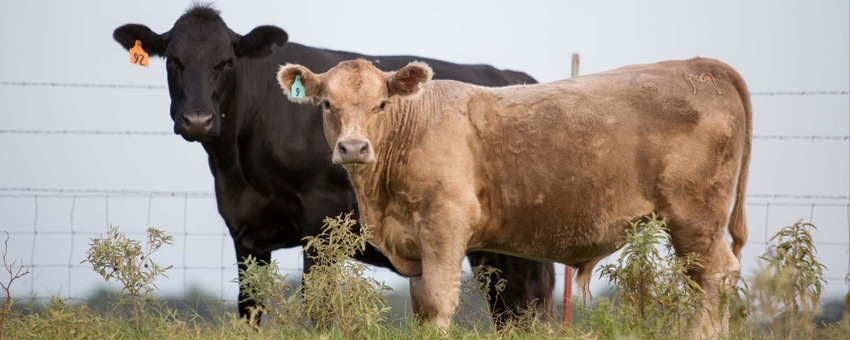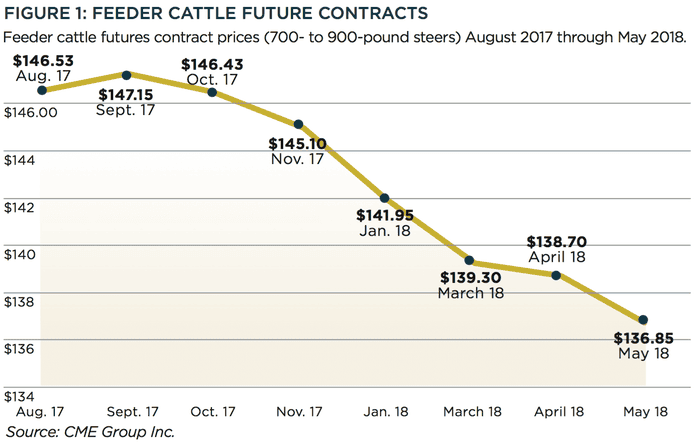Marketing options for your calf crop
While the markets may be volatile, one point of consistency every fall is that there is a host of alternatives to evaluate when thinking about marketing calves.
September 28, 2017

By Myriah Johnson
It has been, to say the least, a wild ride. Consider this scenario: feeder cattle prices have risen 25% since last October. Leading up to that, however, we saw a 45% decline in feeder cattle prices since the high in June 2015.
While the markets may be volatile, one point of consistency every fall is that there is a host of alternatives to evaluate when thinking about marketing calves. Some producers have 2016 fall-born calves to sell, while others contemplate the best option for their 2017 spring-born calves. Here, we'll walk through options for each calving season.
Marketing spring-born calves
For calves born in spring 2017, the question is: "Do I sell now or later?" However, there are many different "laters."
The choices here are:
Strip the calves from their mothers and sell before the bawl is out of them
Wean and background or precondition the calves
Wean, background, place them on winter small grains pasture and pull them off by first hollow stem
Wean, background and place them on winter small grains pasture through graze-out
We will assume that the strip and sell calves will weigh 500 pounds in October 2017, the preconditioned calves will weigh 600 pounds in December 2017, those off winter small grains will weigh 800 pounds in March 2018, and those off the graze-out winter pasture will weigh 900 pounds in April 2018.
Currently, we estimate the value of gain to be $1.70 per pound going from October to December, while it's estimated at 94 cents per pound going from October 2017 to March 2018, and 64 cents per pound going from October 2017 to April 2018. Again, the price discount going into next spring is steeper than what we see in the remaining few months this fall (Figure 1). If you are looking for the highest value of gain, that looks to be in just a few short months this fall.

Marketing fall-born calves
Calves born in fall 2016 are now hitting the yearling mark and probably weigh close to 800 pounds. The basic question many producers have is essentially the same: "Do I sell now or later?"
At this writing, we estimate an 800-pound steer to bring $147.15 per cwt in September 2017. Looking on down the road, we estimate that a 900-pound steer in Oklahoma City in November 2017 would bring $146.27 per cwt based on the current futures price and historical basis. Looking to January 2018, we figure a 1,000-pound steer in Oklahoma City would bring $128.35 per cwt.
That is a pretty steep discount going from September to January – nearly $20 per cwt. In most cases, it can be hard to overcome that kind of price decline. However, the lack of price decline (or near even prices) going from September to November can allow a producer to put gain on cattle and create value.
In this alternative (September to November), the value of gain at $1.39 per pound is more than twice that if we extend out to January 2018. For those whose cost of gain is well below $1.39 per pound, producers who hold onto calves that gain a few extra pounds from September to November may find themselves a pretty good deal. In this case, a flat market is a friendly market after seeing the deep discounts in forward months last fall.
Preconditioning calves
Producers who precondition their calves may be able to attain a higher value of gain than the $1.70 currently offered at the market. Generally, the highest prices are for calves participating in a VAC-45 or VAC-60 program that require a minimum length of weaning time and are combined with a health protocol.
Every producer must evaluate the trade-offs of preconditioning for themselves, but most can expect preconditioning to be a profitable endeavor eight or nine out of 10 years. Alternatively, selling calves in October immediately after they are removed from their mothers can result in significant discounts as well as much higher shrink. Retaining ownership of calves for preconditioning increases risk; each producer must evaluate this for themselves.
Keep your pencils sharp
Whether you have fall- or spring-born calves, the best alternative this fall currently looks to be holding the calves until November (fall 2016 calves) or December (spring 2017 calves), and selling before the market prices start to decline into next spring. Prices can change in a hurry. Keep your pencils sharp, and crunch these numbers for your situation.
Johnson is an agricultural economist consultant with the Noble Research Institute, Ardmore, Okla.
You May Also Like



